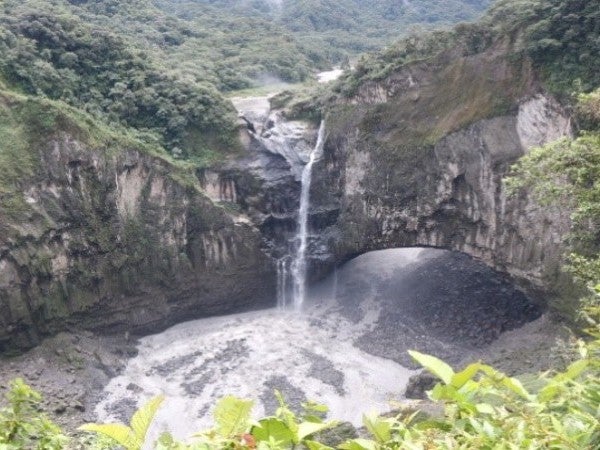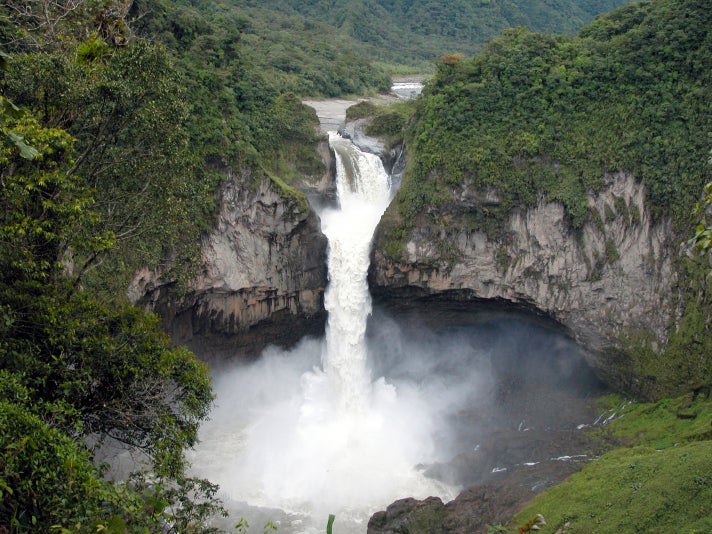Ecuador’s tallest waterfall has disappeared
Government launches investigation as experts suggest sinkhole may be related to construction of hydroelectric plant

Your support helps us to tell the story
From reproductive rights to climate change to Big Tech, The Independent is on the ground when the story is developing. Whether it's investigating the financials of Elon Musk's pro-Trump PAC or producing our latest documentary, 'The A Word', which shines a light on the American women fighting for reproductive rights, we know how important it is to parse out the facts from the messaging.
At such a critical moment in US history, we need reporters on the ground. Your donation allows us to keep sending journalists to speak to both sides of the story.
The Independent is trusted by Americans across the entire political spectrum. And unlike many other quality news outlets, we choose not to lock Americans out of our reporting and analysis with paywalls. We believe quality journalism should be available to everyone, paid for by those who can afford it.
Your support makes all the difference.Ecuador's tallest waterfall has disappeared after a sinkhole diverted its water source.
The 150m-high San Rafael Waterfall on the Coca River previously attracted tens of thousands of people a year.
But a sinkhole appeared in the riverbed above the fall, diverting the river into three separate sections with a less steep slope, according to local media reports.
The river appears to have all but vanished from the vantage point from which it used to be photographed.
The Ministry of the Environment has launched an investigation into the cause of the sinkhole, but experts suggested it may be related to the construction of the country’s largest hydroelectric plant.

“A waterfall that has been there for thousands of years does not collapse, coincidentally, a few years after opening a hydroelectric project,” Emilio Cobo, coordinator of the South America Water Program at the International Union for the Conservation of Nature, told Mongabay.
“These are processes that are in scientific papers and there is sufficient evidence that a dam can cause effects of this type on a river.”
The cascade of water stopped flowing on 2 February, according to Nasa’s Earth Observatory.
Ecuador’s tourism ministry has said it does not plan to reconstruct the waterbed or restore the waterfall.
It has also cancelled all tours of the falls.
“Unfortunately, Cascada San Rafael is now part of history and will not return,” a spokesperson said.
Join our commenting forum
Join thought-provoking conversations, follow other Independent readers and see their replies
Comments